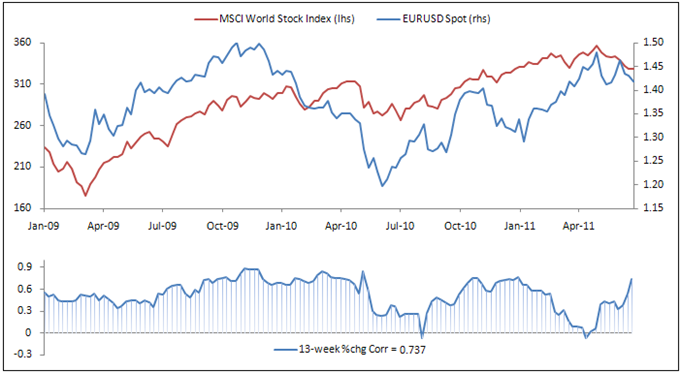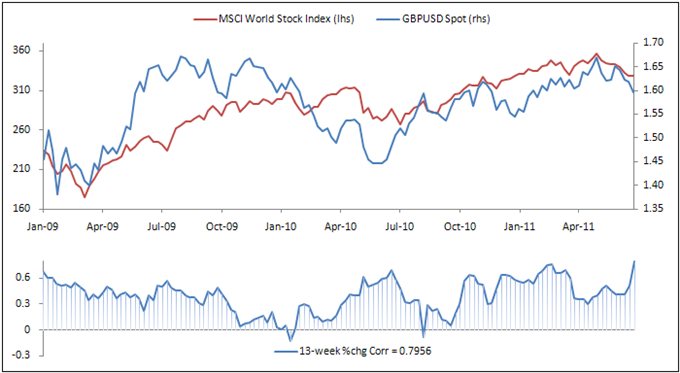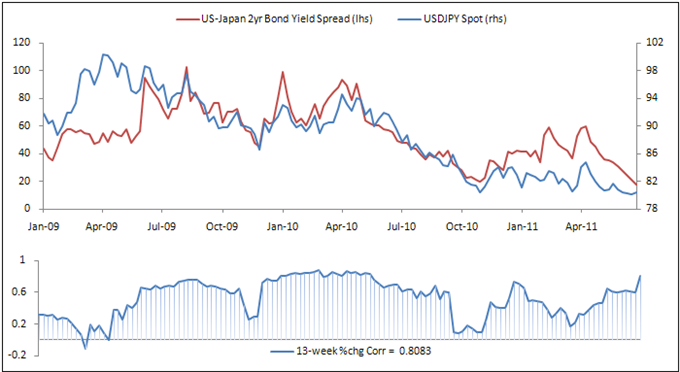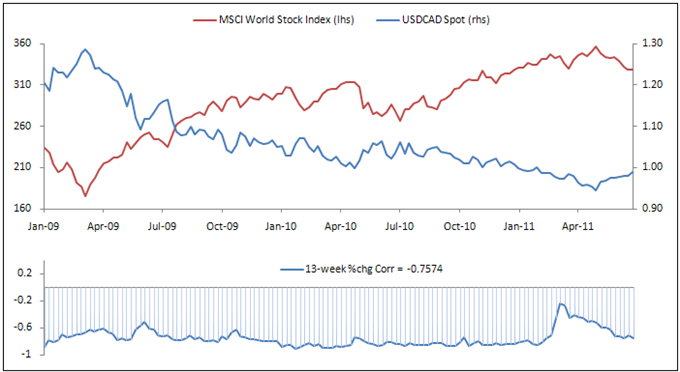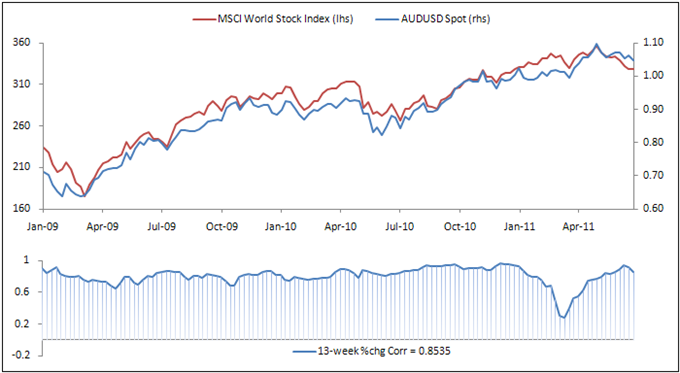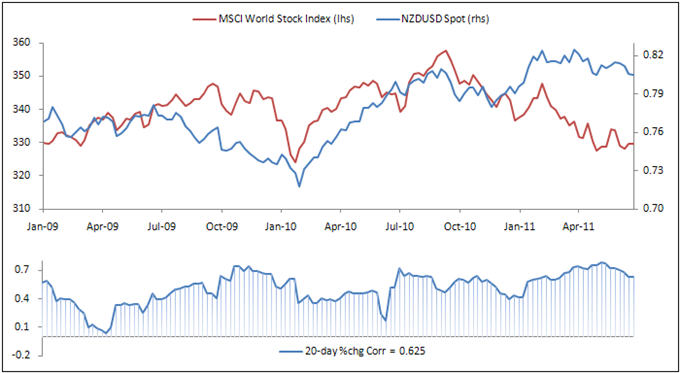by Brandon Smith
It’s amazing. In the wake of the 2008 derivatives and housing bubble collapse, created by the U.S. Treasury and the private Federal Reserve with engineered low interest rates and easy money designed to artificially pump up the economy after the effects of the dot-com bust, the faltering markets of 2000-2001, and the rapidly depreciating dollar, we have now seen these same entities pour Trillions, yes, TRILLIONS in fiat injections into every conceivable corner of the markets. They have spent incredible sums on toxic equities (worthless equities, and don’t let anyone tell you different) to “ease” the debt spiral, they have propped up almost every large international bank, they have propped up the Federal Government and the Dollar itself with sizable purchases of our own Treasury debt, and, they have even thrown money into the pockets of foreign institutions and corporate beggars. Keep in mind, that all the debt that these actions generate is eventually placed squarely in the lap of one group of people; the American Taxpayer!
They have manipulated unemployment figures. They have consistently released completely fraudulent CPI (inflation) figures based on calculations which neglect numerous factors that used to be counted only two decades ago. They have used coordinated naked short selling in precious metals markets to hold back the natural spikes in gold and silver values. They have blamed every negative development in the economy (that they could not hide) on extraneous circumstances and outside culprits rather than themselves. They have done all this, to conjure the illusion of recovery for an increasingly agitated general public.
So much tap dancing and snake oil selling, and all it took, was the pain of $4 a gallon gas to wipe everything away…
That’s right, when the cost of driving to work, driving to shop, or driving for vacation doubles, the naïve notion that everything is perfectly normal goes right out the window. Americans complain a lot, but they rarely accept a bad situation as inexorable and take measures to fix it themselves. There is always the “chance” that things will get better tomorrow, or so we tell ourselves. We just ride the wave, and expect the pack of sharks at our back will never quite catch up to our boogie-board of blind optimism. However, when something takes a Great White sized bite out our very wallets, we take notice, and search the horizon for a bigger boat.
I have commented in the past that after only a few months of high gas prices, the wind would easily be knocked right out of our puffed up bailout driven recovery, and so far, that is exactly what is happening. Retail sales are fumbling, vacation destinations are crippled, the housing market continues to dive, in part due to the relentlessly high price of energy. When people travel less, they spend less, they buy less, and they relocate less.
In response, the IEA (International Energy Agency), an organization of 28 countries, has made a very sudden and startling announcement; each member nation will begin dumping their strategic crude oil reserves onto the global marketplace to flood the supply side of the equation, and, in theory, drive down overall oil prices. The IEA will release over 60 million barrels a day for at least 30 days into the markets, half of which will come directly out of the strategic reserves of the U.S. This is only the third time in the 37 year history of the IEA that this kind of action has been taken. Surely, governments around the world have finally realized that inflation in energy is going to completely derail what’s left of our financial structure, and they are working to prevent this, right…?
Some economists and many in the public will cheer this decision as a fast and decisive solution to the growing oil crises. These people would be foolish. But, perhaps we should look at the debate points from their side of the field, or even the U.S. government and the IEA’s side of the field. Below, we will look at the arguments made in support of the IEA oil dump so far, and why they are utter nonsense…
Lie #1: Oil Prices Are High Because The War In Libya Has Diminished Supply
Better throw on some boots and grab a shovel! Digging through this crap might take all day…
I’ll tell you a little secret, something mainstream economic analysts would rather you didn’t hear: there is NO lack of supply in crude markets. Sorry, the facts are clear. I realize that there are also proponents of ‘peak oil’ out there that fervently want to believe that there is a current and substantial supply side crisis in crude. Whether they are correct or not about the eventuality of peak oil remains to be seen, however, we are certainly not seeing any semblance of an oil shortage today, despite events in Libya.
Libya’s crude production before the war accounted for only 2% of the world’s entire oil output. Oil prices were climbing back towards the high levels seen in 2008 long before the “Arab Spring” broke out in the region. In February, the IEA itself reported that the world oil supply rose to an all time high of 89 million barrels per day. After the Libyan conflict erupted, this production fell by a marginal 700,000 barrels per day:
The establishment’s assertion that Libya is somehow the direct cause of energy inflation is a distraction. Libya has little or nothing to do with anything.
Lie #2: The IEA Oil Dump Will Create A Supply Glut And Drive Down Prices
The position that a “lack of supply” is the culprit behind rising gas prices is an outright falsehood. In fact, markets are already awash in oil, and our government is fully aware of this. The U.S. Energy Department has shown a global trend of falling demand for gasoline, and, the IEA has even admitted that this trend is likely to continue through 2011:
Anyone who follows the Baltic Dry Index also knows that freight shipping has collapsed back down to levels near those that appeared right before the 2008 debt bubble burst. This means around the world there is less demand for nearly ALL goods, and many commodities necessary for manufacturing, not just oil. Lower demand means greater available supply. Therefore, supply is in no way the issue when it comes to high oil prices. Again, the supply argument is a distraction away from the truth. Yet, this has been Treasury Secretary Timothy Geithner’s primary rationale for supporting the IEA dump:
"We saw a very substantial sustained supply disruption. These reserves exist in part to offset those kind of disruptions," Geithner told CNBC television.
So, to reiterate, there is ALREADY a glut in oil markets, and there has been since at least 2008. If there was actually a supply side crisis, trust me, you would know it. If you want to study a true crude supply crisis, then you only need glance back at the energy crisis of 1979 when Jimmy Carter ordered a cessation of Iranian oil imports and the Iran/Iraq war began. When you have to wait in long lines at the gas station just for a few gallons of unleaded, then you might be in the middle of a supply crisis.
After we accept the fact that supply is high and demand is low, we are then faced with an important question; why in the world would the IEA report high supply and low demand, and then expect to have any significant effect on oil markets by dumping our strategic reserves?!
Lie #3: The IEA Oil Dump Was Designed To Hit “Speculators”, Who Are The “Real” Cause Of Energy Inflation
Back in 2009 after the first major gasoline spike subsided, I spoke often about the mainstream financial media’s strange obsession with “speculators”, and the consistent use of talking points obviously designed to condition the American public into associating all oil price jumps with scheming investors in the shadows out to corner the market. My theory back then was that once oil began to skyrocket again due to the crumbling value of the dollar, establishment pundits and government officials would come back once again to point a finger at the speculator boogie man, and draw attention away from our inflating currency. Sure enough…
As we have seen, supply is not an issue, and so speculation should not be either. However, if speculators have actually been hoarding stocks and supplies in order to artificially drive up the price of crude, then the IEA announcement should have sent them scrambling to phone their brokers to sell-sell-sell! The shock to oil markets should have been extraordinary. But what happened? Not much to write home about…
The Brent crude index saw a relatively moderate price drop from around $113-$115 a barrel down to $105 a barrel, and currently, the price is showing potential to climb back up!
Initiating the release of the strategic oil reserves of nations across the globe caused an overall price drop of a few bucks? I guess speculators weren’t having much of an effect on the market after all.
So, if speculators aren’t the cause, and neither is limited supply or high demand, then what IS the phantom driver of inflation in energy? There is only one other possible answer; devaluing currencies. The IEA can pour all the oil they want into the markets and it won’t change a damn thing, because higher supply does nothing to strengthen the foundation of the dollar, which is being swiftly eroded by the Federal Reserve. Have they accomplished a minor halt to rising prices and visible inflation? Yes. Will prices bounce back even higher in the near future as the Fed continue to inject fiat into the economy? Absolutely.
The Consequences Of Reserve Depletion
The IEA announcement comes directly after the last OPEC meeting ended in a bitter split between member countries over whether to raise crude production levels. The decision by every country except Saudi Arabia to keep production steady was the right one, of course. However, elements of the U.S. and the EU were downright unhappy with OPEC’s unwillingness to help hide the weakness of their respective currencies. An OPEC decision to increase production would have at least influenced market psychology, and allowed prices to soften for a short time. So, without OPEC support, the central banker controlled apparatus turned to the IEA to open the floodgates of petroleum. OPEC nations, as one might imagine, are not happy…
There are several threats associated with this development, and there is a distinct possibility that these have been deliberately provoked, if one considers that a weakened America ripe for centralization is the true goal.
First, OPEC countries could easily retaliate against the IEA by dropping their own production levels. Not only will the IEA action be meaningless (as we have shown above), it could also directly trigger a REAL supply crisis if OPEC decides to dam up the river. The U.S. is very unpopular in the Middle East, Africa, and Venezuela already. Now, the IEA has just given these regions a perfect excuse to dish out some economic vengeance.
Second, traditionally, if there is a real supply side crisis caused by OPEC, our most important stop-gap would be to tap into our strategic reserves. Unfortunately, we have just put those reserves on the market without batting an eye. So, in essence, we paid a very high price for a bullet that we will one day shoot ourselves in the foot with. That is to say, we have dumped our strategic reserves and set in motion a possible disaster which those reserves were supposed to save us from! Its mind boggling!
Third, there is very little stopping OPEC at this point from decoupling from the U.S. dollar completely, especially if crude prices continue to rise despite the IEA dump. The fact of currency inflation and dollar implosion will be so exposed that no one, not even “Tiny Tim” Geithner, will be able to deny it. Once the illusions of “limited supply” and “speculation” are cast aside, the global focus will end up squarely on the dollar, and the IEA dump will have sped up the process dramatically.
I don’t know if anyone else has noticed, but this country has been thoroughly gutted over the past few decades. Our industrial base has been dismantled and shipped overseas to the benefit of foreign nations and corporate feudalists. Our grain reserves, once ample, have been depleted to an all time low. Our currency has been systematically debased. And now, our oil reserves, without rational cause, are being sold off only to feed the catastrophe our government is supposedly out to stop. Are the American people being prepped like a glazed ham for the fires of the globalist oven? Is this really all due to coincidence and stupidity as skeptics claim, or is there something else at work here? I find it hard to believe that the IEA and our government are not aware that their proposed strategies conflict with their own source data, or that they are completely oblivious to the destruction they are about to reap upon our economy. The latest IEA decision is just one more piece of evidence of an agenda of deliberate financial destabilization trending towards a disaster that serves the interests of a select few, to the detriment of all the rest.




